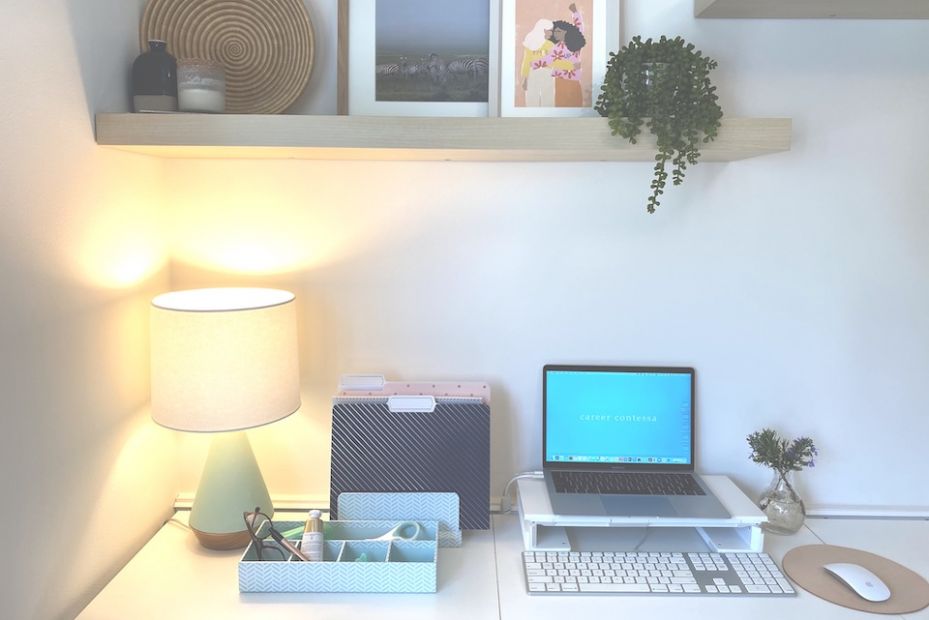I’ve been trying to figure out this challenging dance of how to be Black but not “too Black” in predominantly white spaces my entire life.
I remember having a conversation with a trusted and beloved mentor of mine a few years ago when she told me, “Women have to work twice as hard as men to receive the same recognition. But Black women have to work ten times harder than both men and white women in order to simply be ‘seen’ in predominantly white spaces."
At a very young age, Black women learn to be intimately connected to the struggles of their double identity of being both Black and a woman. Outside of growing up in a predominately ethnic minority neighborhood, I have been navigating predominately white work and educational spaces for a very long time.
Race is omnipresent, and operating in a system that continues to uphold racist and gendered institutionalized practices has severe consequences for Black women who are trying to be both seen and valued in predominantly white spaces.
The Paradox of hypervisibility and invisibility
Like many women of color, I feel this strange and pervasive sense of both hypervisibility and invisibility. Race is omnipresent, and operating in a system that continues to uphold racist and gendered institutionalized practices has severe consequences for Black women who are trying to be both seen and valued in predominantly white spaces.
You find that your Blackness is always on display, while also feeling constantly ignored and alienated by the whiteness surrounding you. It is the hypervisibility that propels white people to involve law enforcement when they perceive Black people to be “criminal”, “suspicious” or as not belonging in particular spaces. It is the hypervisibility that forces women of color to change their tone, be less direct in communication or use inflection when they speak in order to not be perceived as “angry” “hostile” or even worse “sassy.”
Cue, the Viola Davis eye roll meme.I had internalized many of the messages that Black women are indoctrinated with—don’t take up too much space, don’t show too much as it will likely contribute to someone else’s discomfort, don’t wear heels too high.
Don’t take up too much space
It is the hypervisibility that demands that we don’t draw too much attention to ourselves—often choosing neutral colors instead of the vibrant, neon green top; we may choose to avoid constantly changing our hairstyles or avoid wearing pencil skirts that show off our curvaceous figure. I found myself unconsciously making these choices when I shopped for professional clothes; I chose outfits that would not accentuate or bring much attention to my rather larger rear end.
It became quite clear in this moment that I had internalized many of the messages that Black women are indoctrinated with—don’t take up too much space, don’t show too much as it will likely contribute to someone else’s discomfort, don’t wear heels too high, it creates that perception that you like to overpower people.
Hearing the opinions of Black women in the workplace should never be an afterthought.
The Invisible Other
We learn to prioritize the comfort and wellbeing of our white colleague over our own satisfaction and contentment. And paradoxically, it is our invisibility that encourages men and white women to talk over us or interrupt us in meetings, exclude us from certain conversations, or not give us credit for the exceptional amount of emotional and physical labor we devote to our workplaces. It is our invisibility that forces us to assert ourselves more in emails because no one bothered to listen to us or ask us about our perspectives in the conference/board room.
This only creates more emotional work for Black women in workplaces; we have to find less effective, and less visible means to be “seen” and “heard.” Hearing the opinions of Black women in the workplace should never be an afterthought, and we should never be relegated to only using email communication to share our perspectives.
Directing comments to Black colleagues about their intellectual or work capabilities are really pseudo compliments.
The Emotional Tax of Microaggressions
"But you are really smart and really talented...for a Black woman."
Microaggressions are defined as a comment or action that subtly and often unconsciously or unintentionally expresses a prejudiced attitude toward a member of a marginalized group (such as a racial minority). Directing comments to Black colleagues about their intellectual or work capabilities are really pseudo compliments. Intellect and a great work ethic aren’t anything unique in a workplace; but when we direct these compliments to our Black colleagues, we aid in the perpetuation of the claim that they are truly the exception to the rule. And what use it is to compliment Black women for possessing these qualities but then chastise them for asserting their intellect or challenging company policies or procedures?
Black girls are criminalized early in school for simply being “too vocal, too assertive, too hostile, and taking up too much space. An
article written by Jamilah King for
Mic pointed out that "in New York City, Black girls made up 28 percent of the student body population during the 2011-2012 school year, but were 90 percent of all girls expelled that year from the city's schools, according to the "Black Girls Matter"
report by the African American Policy Forum." What message are we giving young Black girls when they have to pay such a high social penalty for speaking out?
I notice that we tend to meet their complaints and comments with deference, we hear them, we empathize with them, we don’t interrupt them and we allow them space and time to do these things.
Decentering the perspectives of Black women
I have found myself in many professional settings where I have watched white colleagues in public meetings air their grievances or challenge authority or institutional practices. I notice that we tend to meet their complaints and comments with deference, we hear them, we empathize with them, we don’t interrupt them and we allow them space and time to do these things.
Oftentimes when I speak up in a meeting, I’m interrupted by another white colleague who wants to help validate my claims by offering a similar perspective. And while the intent may be to show support of their colleague of color, the interruption only serves to invalidate, erase and decenter the perspectives of women of color.
We also need to acknowledge that there aren’t many safe spaces for women of color to air our grievances or be vulnerable.
Talk less, listen more
Most importantly, interrupting is not listening even if your statement aligns with the sentiments of your colleague of color. Listen, listen, and continue to listen, and don’t talk until you have listened.
We also need to acknowledge that there aren’t many safe spaces for women of color to air our grievances or be vulnerable. Many of us have been raised to show strength and resolve during times of fear and despair; when we feel “sad” or “angry”, we dismiss our feelings because we are taught that Black women cannot be anything but strong, formidable, unaffected, and unemotional. We need to be cognizant of these everyday practices and gestures that prevent women of color from being seen and heard. We need to encourage honesty and transparency in our workplaces. We also need to afford the same time and space to women of color to be transparent and share in a way that feels truly authentic to them. We need to respect their authenticity.
In a recent meeting I attended, a male colleague realized that I had wanted to say something, but wasn’t able to interject into the conversation. He stopped the meeting, and said, “Ciera, you had something to say?” I was astonished—and internally, I was crying and screaming. Why did it take him stopping a meeting and calling me out for people to listen? It was also in this moment where he modeled a practice that white colleagues, especially men, should emulate: it is sometimes necessary to stop a meeting and give the platform and space to women of color.
Given our position in the racial and gender hierarchy, Black women don’t have the same privilege to stop a meeting; it’s important that white people use their power and privilege to redirect the conversation and center the perspectives of women of color.
Black women have to constantly negotiate between identities that are imposed on us by the external world, simultaneously fighting relentlessly to create and push forward our own definitions of self.
My hope for the future
The rhetoric surrounding Black women in white workplaces has always been uniquely complicated. Black women have to constantly negotiate between identities that are imposed on us by the external world, simultaneously fighting relentlessly to create and push forward our own definitions of self.
My hope for the future of our workplaces is that we can adopt a more complex and intricate definition and portrayal of Black women—one that recognizes our immense resolve and resilience to purse unfathomable challenges, but also one that acknowledges that we are human. And most significantly, one that works tirelessly to ensure that we feel both seen and heard. We deserve it.










